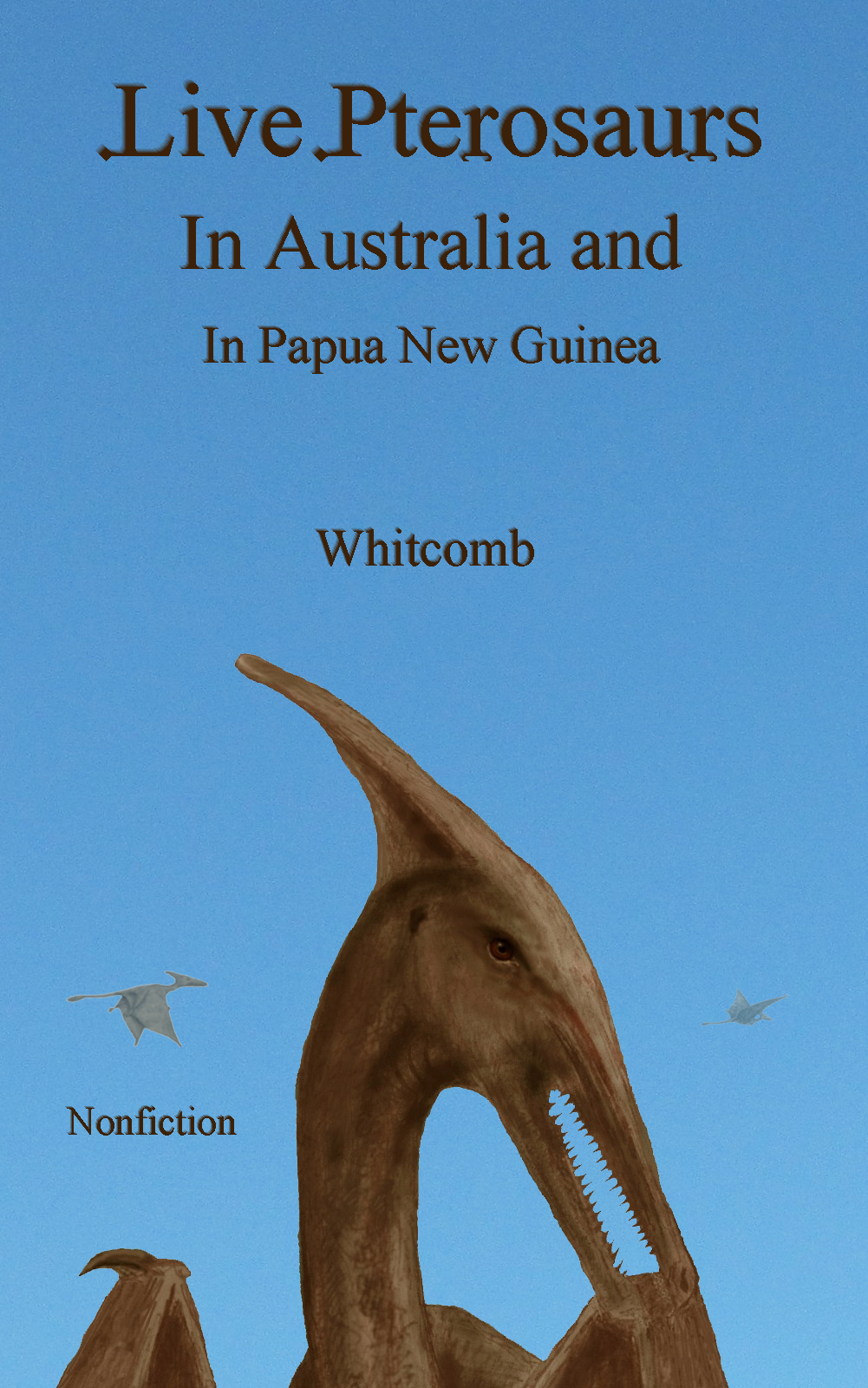See Part One of Whitcomb-Syrett radio interview, for the beginning of the discussion. This third part of the series is not the end of the interview, which is lengthy. It is continued from the second part. (A fourth part may or may not be added later.) This post includes a quotation from the digital book Live Pterosaurs in Australia and in Papua New Guinea. Richard Syrett:
How did that skill help you in [interviewing] witnesses?
Jonathan Whitcomb:
Well, I noticed on the videotapes (I got from Paul Nation from Texas, who went on a couple of expeditions before I did), and I noticed on the videotaped interviews of the natives, and I looked at that . . . I realized that the natives are not trying to convince anybody of anything, they’re just casually relating what they saw, and most of them saw just a light in the distance, a flying light, because we believe its bioluminescence from the creature. And most of them saw that, and they admit they didn’t see anything about the form; it’s just a few of them that saw the form like a pterosaur. So I was convinced that they’re telling the truth . . .(in particular one named Gideon Koro—he saw it in the day time: astonishing, frightening creature).
Syrett:
Why do they seem to be so prevalent in Papua New Guinea? Is it because it’s remote, or is there a food source there? Why so many ropens in New Guinea?
Whitcomb:
Well, generally all over the world, for eight and a half years or so I’ve been researching this, and I get a lot of emails from people all over the world [even] phone calls. Generally most of them are long-tailed creatures, no feathers. I don’t know for sure that they’re more prevalent; I believe they’re more prevalent in Papua New Guinea because there’s a variety of different food sources they have in the reefs, for example, [on] Umboi Island, while I was exploring, a creature was dominant there on the island, will go to one reef one night, and then he’ll get food there, giant clams or whatever it is . . . and then he’ll go to the mountain that’s closest to it, and then he’ll go to another mountain and then fly off on another night to a reef that’s adjacent to that mountain.
[May or may not be continued in another post] . From the nonfiction cryptozoology book Live Pterosaurs in Australia and in Papua New Guinea: Introduction
. . . In modern eyewitness reports, long-tailed pterosaurs outnumber short-tails, at least four-to-one. Standard models of extinction make this ratio appear strange, for the long-tailed variety were thought to have dwindled before the short-tailed pterosaurs became dominant, at least that’s the theory. Nevertheless, the ratio is significant in modern sightings, appearing consistent regardless of the culture or beliefs or education of the eyewitness. Furthermore, many of those long tails are reported to have tail vanes that suggest Rhamphorhynchoids. A common word used by eyewitnesses, to describe the shape of the structure at the end of the tail, is “diamond.”
First Chapter: “How can Pterosaurs be Alive?”
. . . Some eyewitnesses fear discovering the monstrous possibility of personal insanity. Others fear not insanity itself but the opinions of anyone who might think them insane. Others fear discovering that some of what they had been taught about science was false; they prefer to believe that scientific proclamations must always be true. How grateful I am for those who, in spite of their fears, report to me their encounters! Of course we’re talking about Western eyewitnesses here. Some Americans and Australians fear what neighbors might say to other neighbors, so some eyewitnesses keep quiet. Natives in Papua New Guinea, on the other hand, might fear the creature itself. Who cares if your closest neighbor is thirsting for gossip? That huge long-tailed flying thing north of your village might become a close neighbor . . . and it might become hungry. You’ll see an example of that kind of fear in the chapter with the interview of Gideon Koro.
$3.99 (U.S. dollars) .



